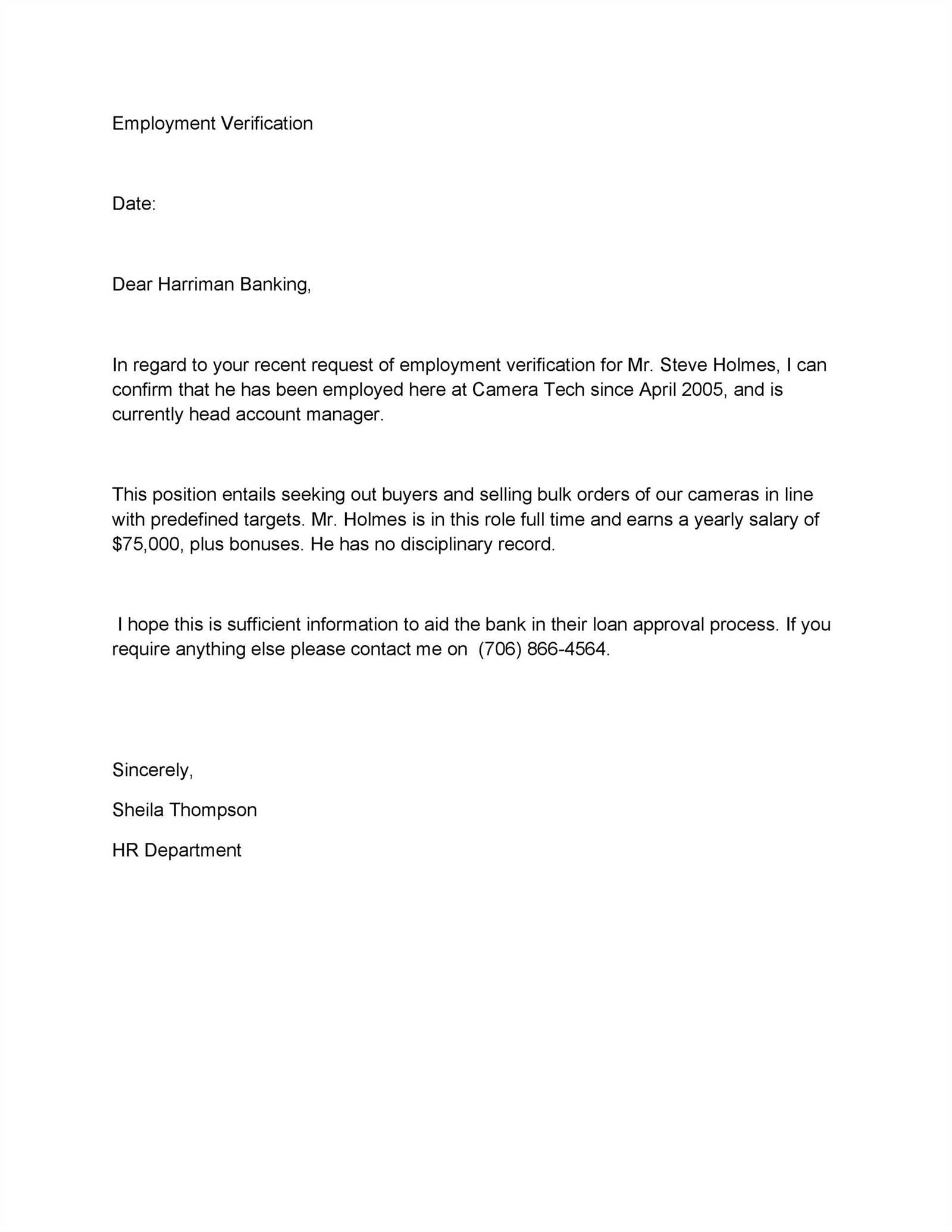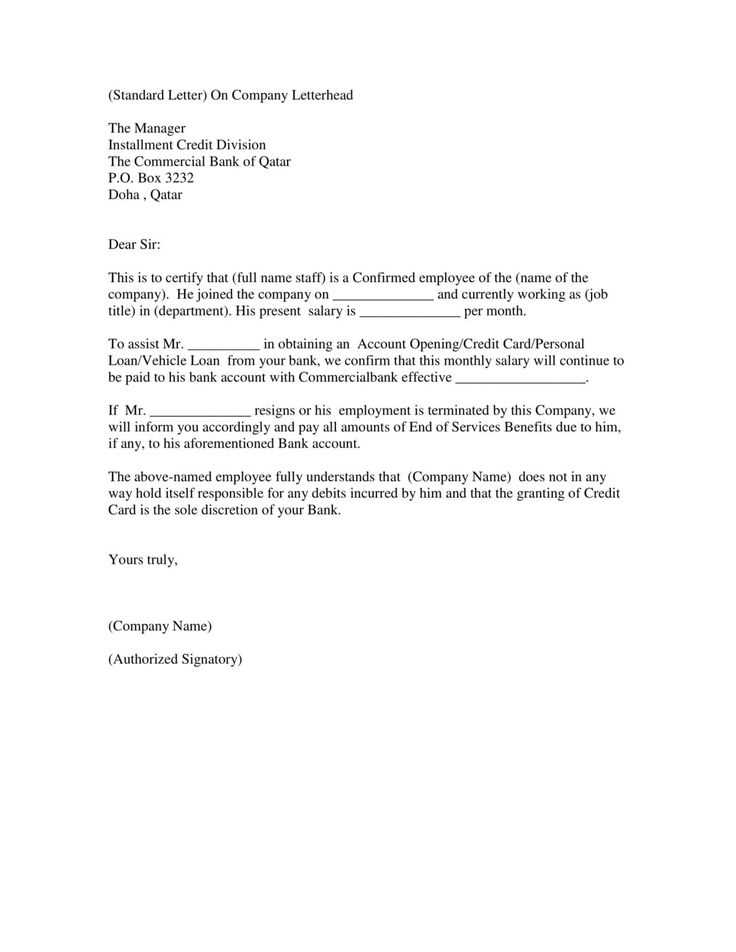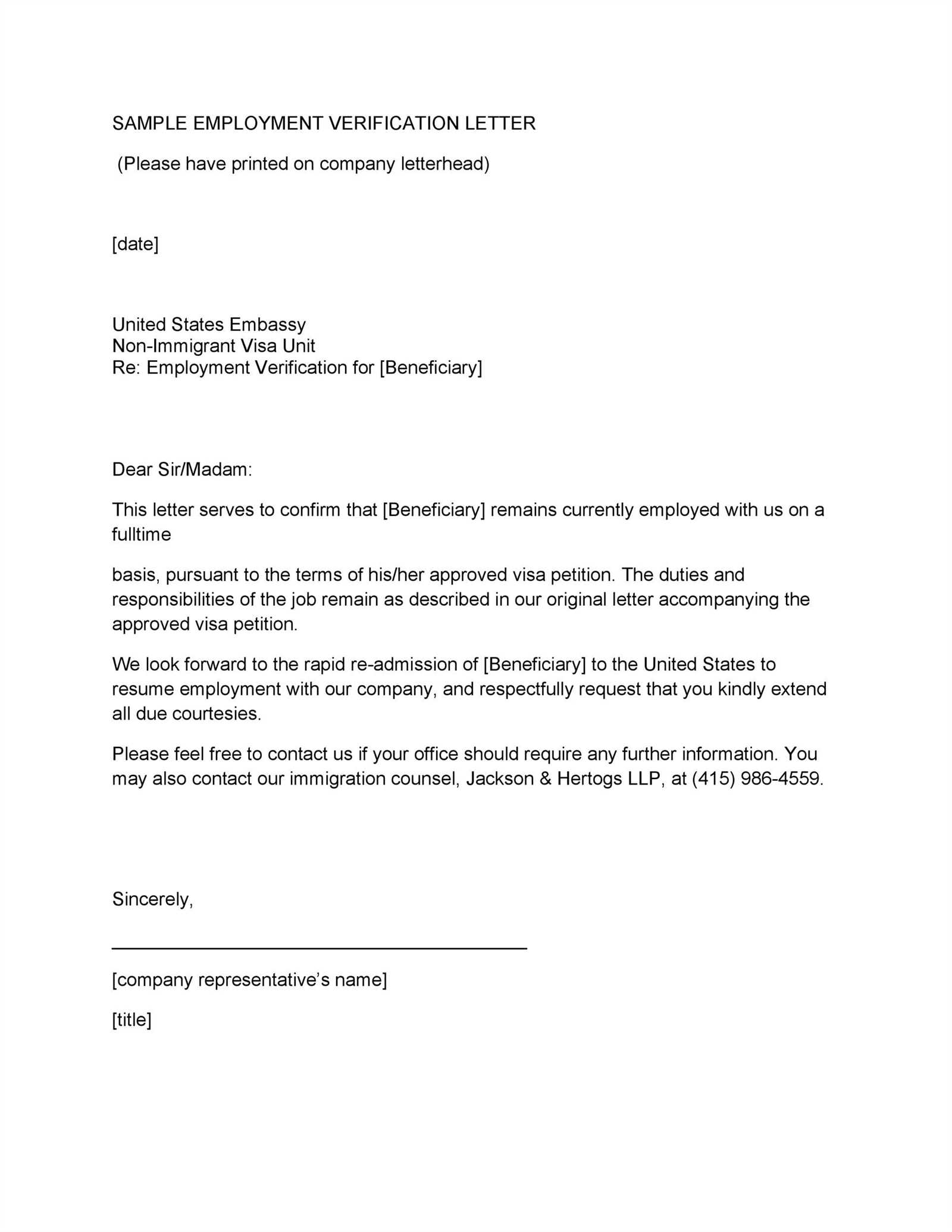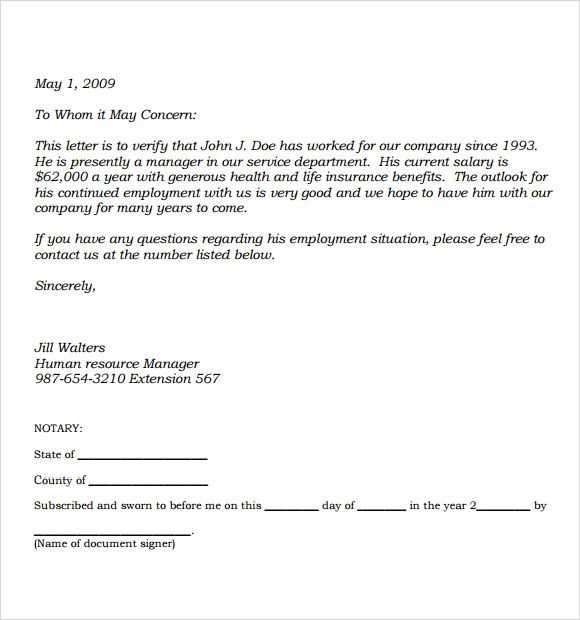Work Confirmation Letter Template for Employers and Employees

Creating a formal document to verify someone’s job status is an essential task in many professional settings. This type of document serves as a proof of employment, providing key details that confirm an individual’s position, tenure, and responsibilities within an organization. Whether it’s for a bank loan, visa application, or other official purposes, this tool can be crucial for smooth professional transactions.
Key Elements of an Employment Verification Document

When crafting this kind of professional correspondence, it’s important to include specific details that ensure its credibility. The main components to address are:
- Employee’s Full Name: Clearly state the person’s legal name as it appears in the company records.
- Job Title: Indicate the employee’s official role or designation within the company.
- Duration of Employment: Provide the start date and, if applicable, end date of employment.
- Employment Status: Mention whether the individual is full-time, part-time, or temporary.
- Responsibilities: A brief outline of the main duties associated with the employee’s role.
How to Customize the Document for Specific Needs

Each request may have unique requirements. To cater to different purposes, you may need to adjust the language or the level of detail in the verification document. For instance, for a loan application, you might highlight the employee’s income and job stability, while for a visa, focus on the job’s location and duration of employment.
Common Mistakes to Avoid
- Incomplete Information: Ensure that all relevant details are included, as missing information can undermine the document’s purpose.
- Incorrect Dates: Double-check the accuracy of employment dates to prevent any confusion.
- Unprofessional Tone: Keep the language formal and to the point, avoiding unnecessary or informal expressions.
Best Practices for Drafting and Sending

After creating the document, it’s essential to review it for clarity and accuracy. Use proper business correspondence formatting, ensuring that the tone remains professional throughout. Additionally, it’s important to send the document through secure channels to maintain confidentiality and avoid potential misuse of the provided information.
Understanding Professional Employment Verification Documents
Formal verification documents are essential tools in professional settings, used to confirm an individual’s role, employment duration, and overall status within a company. These documents can be necessary for various purposes, such as securing loans, verifying employment history, or fulfilling other official requirements. It’s vital that these documents be clear, accurate, and tailored to meet specific needs.
Importance of Clarity
Ensuring the document is straightforward and precise helps avoid confusion. Providing clear and accurate details fosters trust and avoids misunderstandings. Whether the document is for a financial institution, government agency, or another party, clarity is key to its acceptance and usefulness.
Key Elements of a Professional Verification
Essential components should be included to make the document effective. These typically cover the employee’s full name, job title, dates of employment, status, and a brief description of duties performed. Each section must be accurate and aligned with company records to maintain credibility.
Customizing the Document
Adjusting the content for particular needs is necessary. Depending on the requesting party, some sections may require more detail, such as salary information for a financial request or duration specifics for immigration purposes. Customizing ensures the document is relevant and fulfills its intended goal.
When to Issue the Verification
Issuing this document depends on the specific request. Typically, it’s needed when an individual applies for financial services, when relocating for work, or when verifying qualifications for new employment opportunities. Knowing the right time to issue the verification helps streamline the process and ensures it serves its purpose.
Avoiding Common Errors
Common mistakes to watch for include omitting critical details, using informal language, or incorrect dates. These errors can render the document ineffective or even cause delays in the approval process. Thorough review and attention to detail can help avoid these pitfalls.
Best Practices for Sending the Document
To maintain professionalism, it’s important to send the verification through secure channels. Whether via email, postal service, or another method, ensuring confidentiality and proper delivery is vital to protecting both the employee’s and the organization’s information.